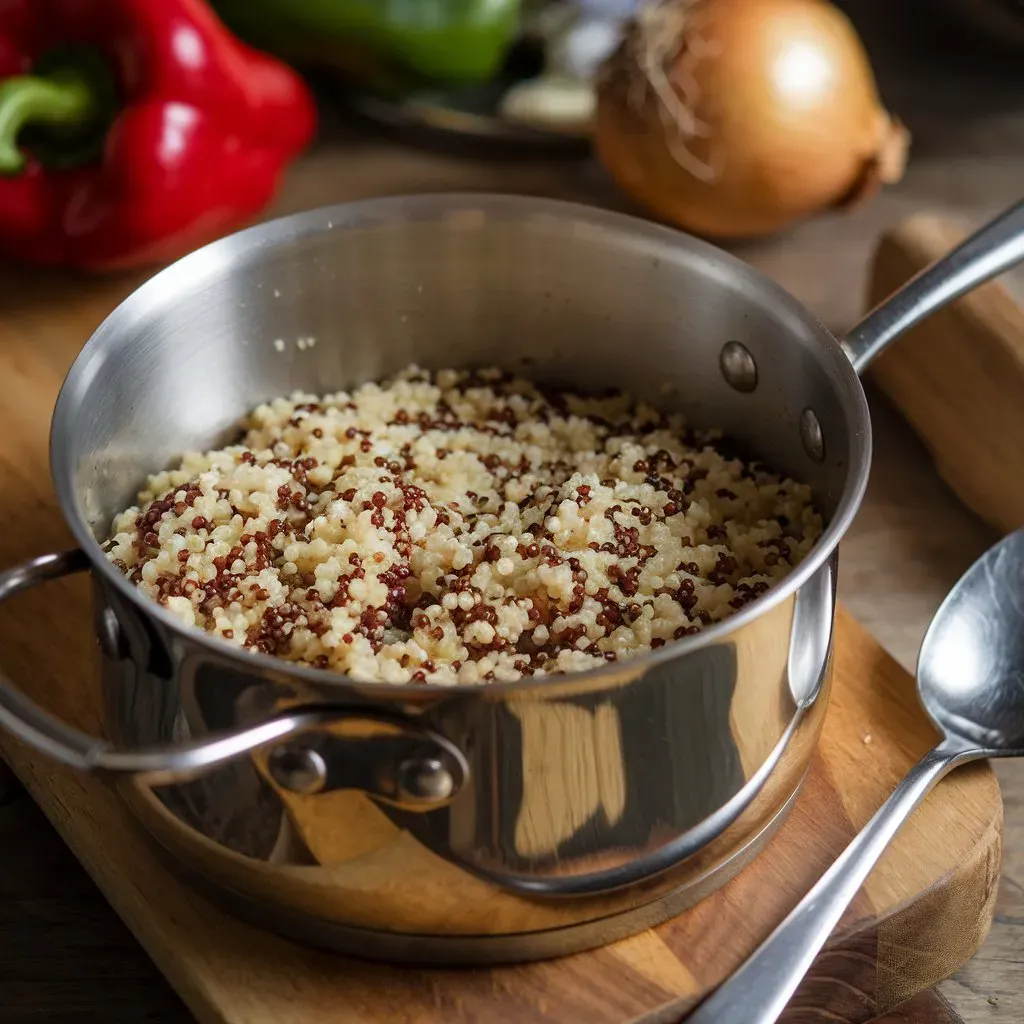In this article, we’ll dive into the benefits, nutritional profile, varieties, and some creative ways to incorporate quinoa into your diet. Additionally, we will explore the environmental impact and why it is a sustainable food choice. Whether you're a health enthusiast or simply curious about quinoa's superpowers, read on to discover everything you need to know about this grain.
Nutritional Powerhouse of Quinoa
When it comes to nutrition, quinoa stands out among other grains. It is considered a complete protein, meaning it contains all nine essential amino acids, making it an excellent choice for vegetarians and vegans. A single cup of cooked quinoa provides around 8 grams of protein, which is higher than most other grains.
Key Nutritional Benefits:
1. Rich in Protein: Quinoa’s high protein content supports muscle repair and growth, making it a perfect addition for athletes and active individuals.
2. High in Fiber: Each serving offers 5 grams of dietary fiber, promoting digestive health and helping in weight management.
3. Gluten-Free: As a naturally gluten-free grain, quinoa is suitable for individuals with celiac disease or gluten sensitivities.
4. Packed with Vitamins and Minerals: Quinoa is a good source of magnesium, iron, potassium, and calcium, which are essential for bone health, energy production, and proper cell function.
5. Low Glycemic Index: With a low glycemic index, quinoa helps regulate blood sugar levels, making it an excellent option for those with diabetes or looking to maintain stable energy levels.
Types of Quinoa
There are three main types of quinoa, each with its own unique flavor profile and nutritional benefits:
1.White Quinoa: The most commonly available variety, white quinoa has a mild flavor and fluffy texture, making it a versatile choice for various dishes.
2. Red Quinoa: With a slightly nuttier taste, red quinoa is often used in salads and cold dishes because it holds its shape better after cooking.
3. Black Quinoa: This variety has an earthier, slightly sweeter flavor and a crunchier texture, perfect for adding contrast to salads and side dishes.
Each type of quinoa offers the same powerful nutrients, so it’s up to personal preference which one you choose to incorporate into your meals.
Health Benefits of Quinoa
Quinoa's health benefits are vast, and incorporating it into your diet can help address various health concerns:
1. Weight Management:
Thanks to its high fiber content and protein levels, quinoa can promote feelings of fullness and reduce hunger cravings. The fiber aids in digestion, helping prevent overeating, while the protein helps sustain energy levels and keeps you feeling satisfied for longer.
2. Heart Health:
Quinoa contains heart-healthy fats, including omega-3 and omega-6 fatty acids. Additionally, its magnesium content helps relax blood vessels, promoting better circulation and lowering blood pressure. Regular consumption of quinoa may reduce the risk of heart disease.
3. Blood Sugar Regulation:
Due to its low glycemic index, quinoa helps prevent sharp spikes in blood sugar levels, which is particularly beneficial for those with diabetes or prediabetes.
4. High in Antioxidants:
Quinoa is rich in antioxidants like quercetin and kaempferol, which help reduce inflammation and combat oxidative stress. This makes it an ideal food for promoting overall longevity and disease prevention.
Quinoa and Sustainability
Apart from its nutritional benefits, quinoa is also a sustainable crop. It grows in harsh environments where few other crops can thrive, requiring minimal water. In times of growing environmental concerns, choosing quinoa is a way to support eco-friendly agriculture.
Since quinoa can be grown in a variety of climates, its production is expanding globally, reducing the pressure on other staple crops like wheat and rice. Its versatility and adaptability make it a valuable solution in the fight against world hunger.
How to Incorporate Quinoa into Your Diet
Quinoa’s mild taste and fluffy texture make it an incredibly versatile ingredient in cooking. Here are some creative ways to enjoy quinoa:
1. Quinoa Salads:
One of the most popular ways to eat quinoa is in salads. You can toss cooked quinoa with fresh vegetables, leafy greens, nuts, seeds, and a light vinaigrette for a refreshing and healthy meal.
2. Breakfast Quinoa Bowls:
Switch up your morning routine by opting for a quinoa breakfast bowl instead of oats. Cook quinoa with almond milk, add some cinnamon, fresh fruits, and a drizzle of honey for a nutrient-packed start to the day.
3. Quinoa as a Side Dish:
Substitute quinoa for rice, couscous, or pasta in your favorite dishes. It pairs wonderfully with grilled meats, roasted vegetables, and stir-fries.
4. Quinoa Patties:
Make savory quinoa patties by mixing cooked quinoa with eggs, breadcrumbs, and herbs, then pan-frying them for a healthy and protein-rich alternative to traditional patties.
5. Quinoa-Stuffed Vegetables:
Fill bell peppers or zucchinis with a mix of quinoa, vegetables, and cheese for a wholesome, delicious meal.
Cooking Tips for Perfect Quinoa
If you're new to cooking quinoa, here are a few tips to help you make the most of this superfood:
1. Rinse Thoroughly: Quinoa has a natural coating called saponin, which can give it a bitter taste. Rinsing it thoroughly under cold water before cooking will remove this coating.
2. Use the Right Water Ratio: The ideal water-to-quinoa ratio is 2:1. This ensures the quinoa cooks evenly and remains fluffy.
3. Add Flavor During Cooking: For extra flavor, cook quinoa in vegetable or chicken broth instead of water. You can also add herbs or spices like garlic, cumin, or turmeric.
Conclusion
Quinoa is a versatile, nutrient-packed superfood that has rightfully earned its place as a staple in healthy diets worldwide. Whether you're looking to improve your protein intake, manage your weight, or support heart health, quinoa offers a delicious and sustainable solution. With countless ways to incorporate it into meals, quinoa is a simple yet powerful addition to a balanced diet.
So, the next time you’re planning a meal, consider adding quinoa to the mix your body (and the planet) will thank you!


